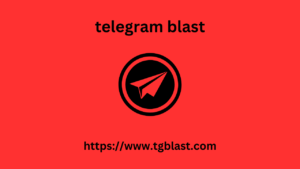This time, we chose a non-obvious topic as our cover story. Something that will be an important reminder for many people in the digital world that analytics, measuring results, and focusing on digital innovations should not overshadow our old and still powerful foundations.
The distribution network and long-term brand building are still basic elements of the marketing mix that cannot be replaced by a simple shift towards the direct-to-consumer channel.
Nike learned this the hard way. The brand, run by McKinsey consultants, after applying conclusions drawn from the world of SaaS (software available in a subscription model), recorded significant declines. Abandoning traditional telegram blast product categories, giving up leadership in the distribution network and fully prioritizing digital and D2C turned out to be a very unhealthy cocktail for the company.
Let’s remember that what can be precisely measured and presented on charts is not always what will actually bring results. Although as Internet experts we are evangelists of analytics and performance measurement, we must also take into account long-term habits, consumer character and simple business intuition. Perhaps in today’s times it should consistently tell us: Your brand is sacred.
Contents:
- Nike licks its wounds
- The first truly social media Olympics
- Coca-Cola wants to be important for the “Z”
- Google is earning more and more
- OpenAI challenges Google
- Twitter is earning less and less
- Sit down and read in Madrid
- Marketers want to learn more about AI
- Ethics as a Marketing Niche
- KFC fulfills culinary fantasies
- Pinterest is working on an advertising system for publishers
- Shorts
- Weekly Tool
Nike licks its wounds
Not all giants navigate the market with equal efficiency.
On June 28, 2024, Nike announced its second-quarter financial results. The losses are impressive. A decline in market capitalization of $70 billion in nine months (of which $25 billion evaporated in a single day), 130 million shares sold (thirteen times the average daily number of transactions on the stock exchange), the lowest share price since 2018.
This is the result of decisions made by John Donahoe, who replaced Mark Parker as CEO in early 2020, and Heidi O’Neill, Nike’s chief consumer and brand officer. The duo led a radical transformation of the brand, eliminating traditional offering categories, ending partnerships with retailers, centralizing marketing and transforming Nike into a company focused on direct-to-consumer (DTC), driven by investments in performance channels and programmatic technologies.
The changes led to numerous operational problems, a drop in consumer loyalty and increased pressure from competitors. Nike’s marathon of mistakes was described in a lengthy but fluent – and very informative – LinkedIn post by Massimo Guno, a brand strategist and corporate communications specialist.
The first truly social media Olympics
This year’s Olympics could prove to be an advertising bonanza for social media platforms. TikTok is emerging as one of the main winners. It’s all because of Generation Z, whose favor the biggest brands are vying for.
According to data from media agency GroupM, advertiser spending on paid social media channels will increase by 9.9% this year, to nearly $342 billion. Meta and Snap are expected to take the majority, but TikTok’s share of the advertising pie is also growing. This is also confirmed by research firm Forrester, which shows that as many as 67% of B2C marketers intend to increase spending on the platform in 2024.
The Olympics are an opportunity for an advertising boost. Samsung, a global partner of the games, is running a campaign whose key element is a custom filter on TikTok. The company intends to allocate most of its “Olympic” social media budget to activities on this platform. The rest will be distributed between Facebook, Instagram and X.
NatWest is also planning extensive social media campaigns, including TikTok. According to Robert Anderson, head of social media at the British bank, this year’s games are the first Olympics that can be considered “truly social media”. Visa has also expressed interest in TikTok, although it did not go into details of spending.
The main reason for the interest in this platform is the preferences of the “zeteks”. Brands are trying to tap into the tastes of the young generation, which spends much more time in front of smartphones than in front of televisions. Instead of watching full games on a big screen, young people prefer to watch “highlights” in the form of short videos.
📰 DigiDay
Coca-Cola wants to be important for the “Z”
Coca-Cola is also courting the “Z” generation. The brand has sponsored the games for almost a hundred years and definitely doesn’t want to be out of the game. Among other things, the giant made sure that its isotonic drink Powerade experience the true flavor became the “official drink” of the United States Olympic team. The company is also trying to reach Generation Z through sponsorships with athletes and organizing concerts and fashion shows.
Coca-Cola also knows how to act more forward-lookingly. The company supports sports disciplines that are popular with the “Zs”. The company has participated in talks with the International Olympic Committee on “rejuvenating” the Olympic menu many times. One of the effects of such actions is the debut of breakdancing at this year’s games. Other “new sports” that have entered the register of Olympic disciplines in recent years include BMX freestyle, skateboarding and sport climbing.
“ We’re focused on keeping our brand relevant to young people. That’s critical to us ,” Brad Ross, vice president of Coca-Cola, told Business Insider.
📰 Business Insider
Google is earning more and more
According to the company’s results for the second quarter of this year, published last week, the giant’s advertising turnover increased by 11% year-on-year (to $64.2 billion). The largest revenues – and growth – were generated by search data on engine ads ($48.5 billion in Q2 2024 vs. $42.6 billion in Q2 2023). “Ads” on the YouTube platform, the second segment in terms of revenue, brought the company almost $8.7 billion – 13% more than in the same quarter last year.
In addition, Google is picking up the pace in the field of artificial intelligence. In the past quarter, the company released thirty AI-based “features” for advertisers.
OpenAI challenges Google
Last Thursday, ChatGPT’z creators announced the testing of their new tool, SearchGPT. It combines a language model with search engine features. In response to user queries, the service will search for information online and serve answers with sources. The prototype is currently being tested with a small group of users.

